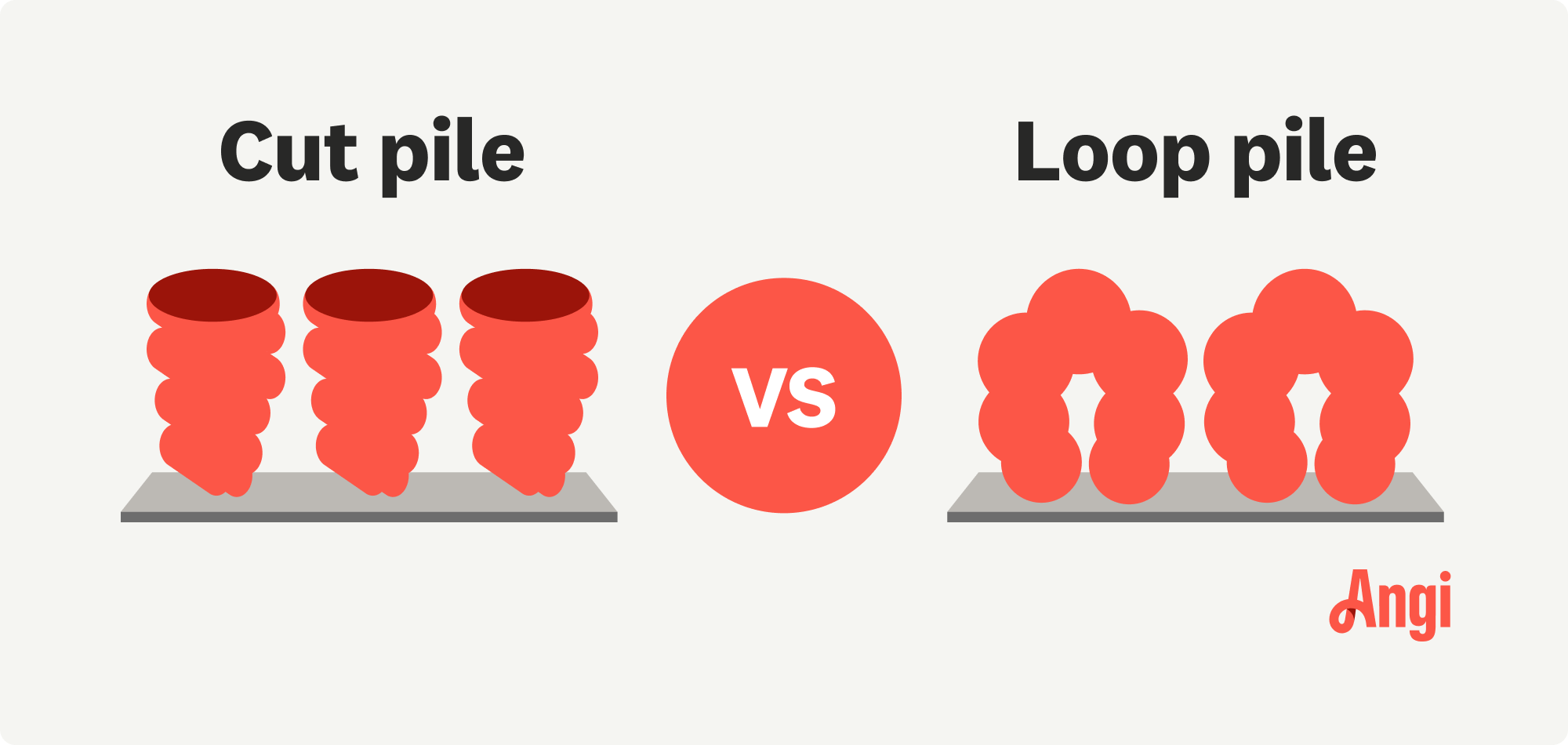
Get a clear estimate for carpet repair cost. Learn what impacts pricing, compare repair types, and find ways to save on your next carpet project.
Stay in the loop on these benefits


Loop carpet features yarn fibers in continuous loops.
This carpet style can have level or multi-level loops for different textures.
The dense looping offers better insulation and noise reduction benefits.
Looped yarn is prone to snagging.
Loop carpet has a lifespan of 10 to 15 years.
When deciding to install new carpet in your home, it’s important to consider what’s most important to you. Do you want something that’s comfortable and stylish but easy to clean? Are you hoping for a carpet that helps minimize noise? Loop carpet could be right for you, but weigh these loop carpet pros and cons before making your final decision.

Loop carpet is a type of carpet that has circles, or loops, of fabric left uncut at the top for a dense, textured finish. The yarn is woven into loops that are either all the same height, known as level loop carpet, or at various heights, known as multi-level loop carpet.
| Pros of Loop Carpet | Cons of Loop Carpet |
|---|---|
| Stylish | Vulnerable to snags |
| Insulating | Less soft |
| Low-maintenance | Shows wear and tear |
There are many reasons why homeowners love loop carpet for a variety of spaces. This attractive, easy-to-maintain carpet has the benefit of being:
One of the major draws to loop carpet is that it has a stylish, timeless look. Loop carpet offers different textures depending on how tight or loose the loops are and their heights. This style can also come in a wide range of colors and patterns to suit any interior design.
The thick looped fibers create a dense layer of material on your floor, which helps with insulation and noise reduction. Paired with the proper carpet padding, this style of carpet can make an impressive difference between cold floors in the winter and a warm, cozy floor to put your feet on in the morning. The dense fabric can also help stifle footsteps and clacking claws from pets.
Typically, carpets should be steam cleaned every 6 to 12 months. The frequency may be less if the carpet is not used often, but foot traffic, pets, and allergies can affect the carpet. If the carpet receives a great deal of foot traffic or is in a home with multiple pets, quarterly cleaning may be appropriate.
Loop carpet is easy to maintain and keep clean, especially for tightly looped carpet. Tight loops prevent dirt and debris from getting trapped deeper within the carpet, and spills are slower to soak deeply into the densely packed fibers.

While loop carpet is great for many different applications, it has some drawbacks to consider.
Keep in mind that the looped fibers are easy to snag. If you have pets, their claws can get stuck in the carpet and pull it. Kids’ toys can snag the fibers while your children are playing. Even rearranging furniture could snag the carpet if you’re not careful.
The looped fabric offers a unique look and texture, and while loop carpet still feels cushiony underfoot, it won’t be quite as soft as some other types of carpet, like Saxony or plush carpet.
Loop carpet is pretty durable and can last 10 to 15 years, but it can look worn out when placed in high-traffic areas like hallways or living rooms. Repeated foot traffic can lead to crushing and pulled loops, and your furniture can leave behind divots. Regular vacuuming can help keep your loop carpet looking fresh, or you can try refreshing your carpet with a damp cloth and steam iron or baking soda and vinegar.
There are three primary carpet types: loop, cut, and cut-and-loop. Each offers a different look and feel, and durability varies for each type. Here are the main differences between each type of carpet.
| Type of Carpet | Description |
|---|---|
| Loop | Round, looped fibers; stylish and textured finish |
| Cut | Looped fibers with the rounded tops cut off; soft but durable |
| Cut-and-loop | Mixture of cut and looped fibers; textured and durable |
Loop carpet is a durable, low-maintenance, and versatile carpet that works in many rooms and homes. If you want carpet that’s easy to care for, comfortable underfoot, and keeps a room feeling warm and cozy, loop is a great option. However, consider a more durable option, like frieze or twist, for playrooms or rooms where kids and pets spend a lot of time.
If you decide to install loop carpet, make sure to leave this project to a pro carpet installer near you. Loop carpet is only as good as the installation, so letting a pro handle this project ensures your carpet will last as long as possible.
From average costs to expert advice, get all the answers you need to get your job done.

Get a clear estimate for carpet repair cost. Learn what impacts pricing, compare repair types, and find ways to save on your next carpet project.

Carpet padding makes your carpet feel extra comfortable and protects your floors from damage, but how much does carpet padding cost? Let’s look at the numbers.

The cost to carpet stairs depends on the number of stairs, material choice, and staircase type. Read on to calculate your project expenses

Knowing the best time to buy carpet can save you hundreds of dollars on installation and may help you get a higher-quality one. Here's what you need to know.

Carpet padding protects your carpet from wear and makes it more comfortable to walk on. This guide explains how to install carpet padding like a pro.

Learn the pros and cons of Berber carpet and discover if this durable, budget-friendly flooring is right for your home.